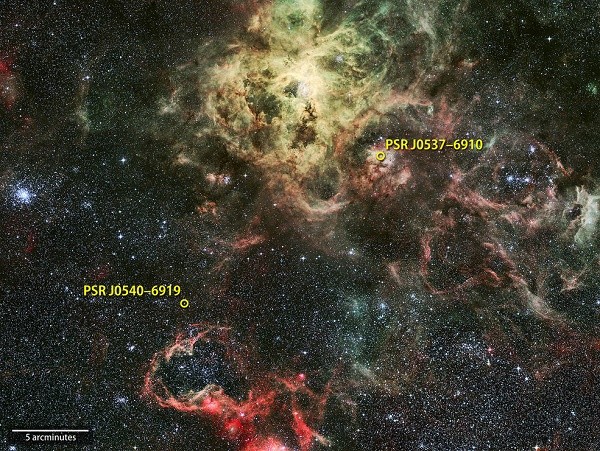Scientists have detected a powerful gamma ray pulsar that has been sending intense beams of radiation and light across the universe, originating from a neighboring galaxy.
Apparently, this is also the first gamma ray pulsar ever detected that was identified by NASA's Fermi Gamma-ray Space Telescope where this ultra powerful pulsar is considered as a galactic monster.
Typically, pulsars are neutron stars that are rapidly spinning which are made from dense, powerful remnants of a once colossal star. When these stars run out of fuel and hydrogen, they implode and then later explode as a supernova and it leaves behind a neutron star of stellar decay and matter that are spinning and hurtling forever in its powerful core.
The pulsar is created from its magnetic field of its prior self, when it used to be a star, and then becomes accumulated and compacted into a core so dense, measuring just a fraction of the star's original size, around a dozen miles across.
This intense magnetism also generates powerful cosmic radiation from the spinning poles of the neutron star, as these radiation beams sweep across the cosmos, right in the direction of Earth, as regular flashes in the sky known as pulsars.
In this new study, astronomers detected this new pulsar that breaks records in the middle of the Tarantula Nebula which is also one of Milky Way's smaller galactic neighbors, inside this satellite galaxy called the Large Magellanic Cloud, some 163,000 light years away.
Scientists have considered the Tarantula Nebula as an intense star forming region in the cosmos where these immense gamma ray emissions originate, that are generating from massive stars that burn as fast and die early. The more gigantic the star is, the faster the rate it will burn up its fuel and the quicker it will end its life, exploding into a supernova where gamma rays are a by-product of this intense stellar death.
When the numerous supernovae emerged in the Tarantula, astrophysicists believe that these are shockwaves that would be felt across deep space, spewing as gases. When the particles escaped, these are transformed into high energies like cosmic rays where they interact with each other, filled with powerful radiation or gamma rays.
In the past years, the Fermi space telescope has been gathering much data from the Large Magellanic Cloud, offering unprecedented views of the Tarantula Nebula where they discovered an astounding pulsar, which is embedded in this stream of gamma rays. Inside are two pulsars where one of them is known as the PSR J0540-6919 that is now generating 60 percent of the entire nebula's gamma rays, on its own.
Apart from identifying the first ever gamma ray pulsar outside the Milky Way, scientists also found something that is 20 times more luminous that the most powerful pulsar inside the Milky Way, deeply seated inside the Crab Nebula called the PSR B0531+21 or the Crab Pulsar.



























